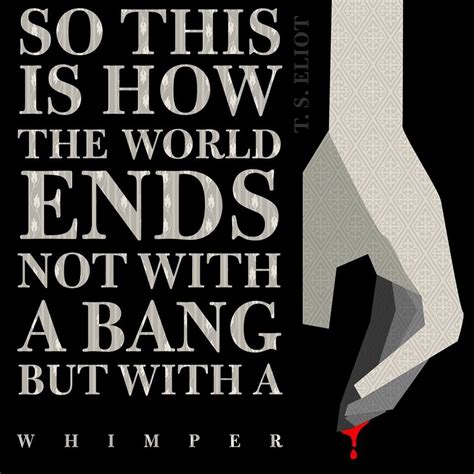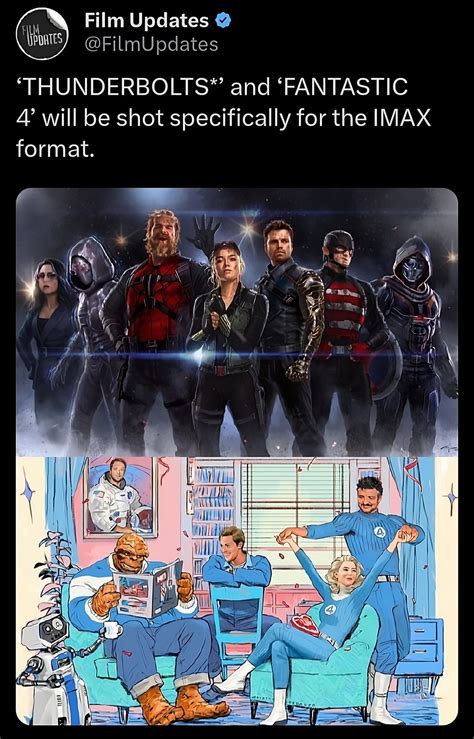
James Blunt’s ubiquitous 2004 hit “You’re Beautiful” wasn’t the romantic ode it was widely perceived to be, the singer-songwriter has revealed. Contrary to popular belief, the song is not about a blissful encounter with a loved one but rather a slightly unsettling observation of a former girlfriend with another man.
James Blunt has clarified the true meaning behind his chart-topping song “You’re Beautiful,” debunking years of romantic interpretations. In a recent interview, Blunt disclosed that the song, released in 2004, is not the sweeping love anthem many listeners assumed it to be. Instead, it narrates a somewhat disturbing encounter with an ex-girlfriend in the London Underground.
Blunt explained that the song depicts a fleeting moment of recognition with an ex-girlfriend accompanied by her new partner. “It’s about seeing my ex on the Underground in London with her new man, who I didn’t know existed,” Blunt stated. This revelation sharply contrasts with the song’s mainstream perception as a quintessential love song, often played at weddings and romantic occasions.
The singer-songwriter further elaborated on the context surrounding the song, highlighting the somewhat unsettling nature of the scenario. He characterized the encounter as one filled with a sense of unease and unspoken emotions. Blunt noted that the lyrics reflect the brief but intense connection he felt during that chance meeting.
Blunt’s candor offers a new lens through which to view the song, inviting listeners to reconsider their understanding of its narrative. His account transforms “You’re Beautiful” from a straightforward love song into a complex reflection on missed opportunities and lingering attachments.
The Real Story Behind “You’re Beautiful”
For years, “You’re Beautiful” has been synonymous with romance, often topping charts and playlists dedicated to love. However, Blunt’s recent revelation paints a vastly different picture. He described the moment that inspired the song: a chance encounter with an ex-girlfriend on the London Underground. She was with another man, a situation that prompted a flood of emotions and reflections.
“We caught eyes, and lived a lifetime in that moment, but we didn’t do anything about it,” Blunt explained. This fleeting connection, laden with unresolved feelings and unspoken words, became the core of the song. The lyrics, previously interpreted as a celebration of beauty and love, now carry a sense of melancholy and regret.
Blunt’s account challenges the popular notion of the song as a simple love ballad. He emphasized the underlying sense of unease and the complicated emotions that fueled its creation. The song, he suggested, is less about admiration and more about the haunting presence of a past relationship.
Reception and Misinterpretations
“You’re Beautiful” achieved massive commercial success, reaching the top of the charts in multiple countries and becoming one of the best-selling singles of the 2000s. Its popularity led to widespread use in romantic contexts, from weddings to movie soundtracks. However, this widespread acceptance as a love song has always been at odds with Blunt’s own understanding of its meaning.
Blunt has often expressed his ambivalence towards the song’s reception, acknowledging the disconnect between his intentions and the audience’s interpretation. He has described the song as “annoying” and “not very good,” partly due to its overexposure and its association with a romantic narrative he never intended.
The misinterpretation of “You’re Beautiful” highlights the complex relationship between artists and their audience. While artists create works with specific meanings and intentions, audiences often bring their own experiences and perspectives, shaping the narrative in unexpected ways. In the case of “You’re Beautiful,” the song’s catchy melody and seemingly romantic lyrics overshadowed its deeper, more complex themes.
Impact on James Blunt’s Career
Despite his reservations, “You’re Beautiful” played a pivotal role in launching James Blunt’s career. The song propelled his debut album, “Back to Bedlam,” to international success, establishing him as a major force in the music industry. The album sold millions of copies worldwide, earning Blunt numerous awards and nominations.
However, the song’s overwhelming success also cast a long shadow over Blunt’s subsequent work. He faced the challenge of escaping the “one-hit wonder” label and proving his versatility as an artist. While he continued to release albums and tour extensively, “You’re Beautiful” remained his most recognizable and enduring hit.
Blunt has navigated this complex legacy with humor and self-awareness. He has often poked fun at the song’s popularity and its association with cheesy romantic tropes. His willingness to engage with the song’s critics and to challenge its conventional interpretation has helped him maintain a sense of authenticity and artistic integrity.
Broader Implications for Music Interpretation
The story of “You’re Beautiful” raises broader questions about the interpretation of music and the relationship between artists and audiences. It highlights the subjective nature of artistic interpretation and the potential for miscommunication between creators and listeners. While artists may have specific intentions when creating their work, audiences often bring their own experiences and perspectives, shaping the narrative in unexpected ways.
This phenomenon is not unique to “You’re Beautiful.” Many songs and works of art have been subject to multiple interpretations, often diverging from the artist’s original intent. This diversity of interpretation can enrich the cultural landscape, allowing audiences to engage with art in meaningful and personal ways. However, it can also lead to misunderstandings and misrepresentations, as in the case of “You’re Beautiful.”
The lesson of “You’re Beautiful” is that music, like all art, is open to interpretation. While it is important to respect the artist’s intentions, it is also essential to acknowledge the role of the audience in shaping the narrative. Ultimately, the meaning of a song lies in the interaction between the artist, the audience, and the cultural context in which it is received.
The Psychological Impact of Misinterpreted Art
The misinterpretation of art, particularly in music, can have a significant psychological impact on both the artist and the audience. For the artist, seeing their work interpreted in a way that contradicts their intentions can be frustrating and disheartening. It can create a sense of disconnect between the artist and their audience, leading to feelings of alienation and misunderstanding.
In the case of James Blunt, the widespread misinterpretation of “You’re Beautiful” as a straightforward love song has been a source of ambivalence. While he appreciates the song’s commercial success, he has also expressed frustration with its association with a romantic narrative he never intended. This disconnect has led him to distance himself from the song at times, even describing it as “annoying.”
For the audience, the misinterpretation of art can lead to a distorted understanding of the artist’s message and intentions. It can also create a sense of cognitive dissonance, particularly when the artist’s explanation of their work contradicts the audience’s interpretation. This dissonance can lead to confusion and frustration, especially for listeners who have a strong emotional connection to the song.
The Role of Media in Shaping Interpretations
The media plays a significant role in shaping the interpretation of music and other forms of art. Reviews, articles, and interviews can influence how audiences perceive a work, often reinforcing certain interpretations while marginalizing others. In the case of “You’re Beautiful,” the media largely perpetuated the romantic interpretation of the song, contributing to its widespread acceptance as a love ballad.
This media influence can be both positive and negative. On the one hand, it can help to promote and popularize art, bringing it to a wider audience. On the other hand, it can also distort the artist’s message and intentions, leading to misinterpretations and misunderstandings.
Artists can attempt to counteract this media influence by speaking out about their work and sharing their own interpretations. However, their voices are often drowned out by the dominant narratives perpetuated by the media. In the case of James Blunt, his attempts to clarify the meaning of “You’re Beautiful” have often been overshadowed by the song’s romantic association.
The Evolution of “You’re Beautiful” in Popular Culture
Despite its complex and somewhat unsettling origins, “You’re Beautiful” has become a staple of popular culture. It has been featured in numerous movies, television shows, and commercials, often in romantic contexts. The song has also been covered by countless artists, each bringing their own interpretation to the material.
This evolution of “You’re Beautiful” in popular culture reflects the dynamic nature of art and its ability to adapt to changing cultural contexts. While the song’s original meaning may have been rooted in a specific personal experience, it has taken on new meanings and associations over time.
The song’s enduring popularity also speaks to its universal appeal. Despite its specific narrative, “You’re Beautiful” touches on themes of love, loss, and longing that resonate with audiences across cultures and generations. Its catchy melody and heartfelt lyrics have made it a timeless classic, even if its interpretation has evolved over time.
The Enduring Legacy of a Misunderstood Hit
“You’re Beautiful” remains one of the most recognizable and enduring songs of the 21st century. Its success has cemented James Blunt’s place in music history, even though he has often expressed ambivalence towards the song. The story of “You’re Beautiful” serves as a reminder of the complex relationship between artists and audiences, and the subjective nature of artistic interpretation.
While the song’s romantic association may not align with Blunt’s original intentions, it has nevertheless shaped its legacy in popular culture. “You’re Beautiful” continues to be played at weddings, featured in romantic movies, and covered by aspiring musicians. Its enduring appeal speaks to the power of music to evoke emotions and connect with audiences on a deeply personal level.
Ultimately, the meaning of “You’re Beautiful” lies in the interaction between the artist, the audience, and the cultural context in which it is received. While Blunt’s recent revelations may challenge our understanding of the song, they also enrich its narrative and invite us to reconsider its place in our hearts and minds. The song’s journey from a personal reflection to a global phenomenon is a testament to the power of music to transcend boundaries and connect us all.
Frequently Asked Questions (FAQ)
1. What is the real meaning behind James Blunt’s “You’re Beautiful”?
According to James Blunt, the song is not a straightforward love song but rather a slightly unsettling reflection on a chance encounter with an ex-girlfriend on the London Underground. She was with another man, and the song captures the intense emotions and unspoken words of that fleeting moment. It’s more about a sense of longing and regret than pure admiration.
2. Why has the song been misinterpreted as a romantic anthem?
The song’s catchy melody and seemingly romantic lyrics have contributed to its widespread interpretation as a love song. Its popularity in romantic contexts, such as weddings and movies, has further solidified this perception, overshadowing the more complex and nuanced meaning intended by Blunt.
3. How does James Blunt feel about the song’s misinterpretation?
Blunt has expressed ambivalence towards the song’s reception, acknowledging the disconnect between his intentions and the audience’s interpretation. He has described the song as “annoying” at times, partly due to its overexposure and its association with a romantic narrative he never intended.
4. Did “You’re Beautiful” help or hinder James Blunt’s career?
While “You’re Beautiful” launched James Blunt’s career and propelled his debut album to international success, it also cast a long shadow over his subsequent work. He faced the challenge of escaping the “one-hit wonder” label and proving his versatility as an artist.
5. What does the story of “You’re Beautiful” tell us about music interpretation in general?
The story of “You’re Beautiful” highlights the subjective nature of artistic interpretation and the potential for miscommunication between artists and audiences. It shows how audiences can bring their own experiences and perspectives to a work, shaping its narrative in unexpected ways, and emphasizes that the meaning of a song lies in the interaction between the artist, the audience, and the cultural context in which it is received.









